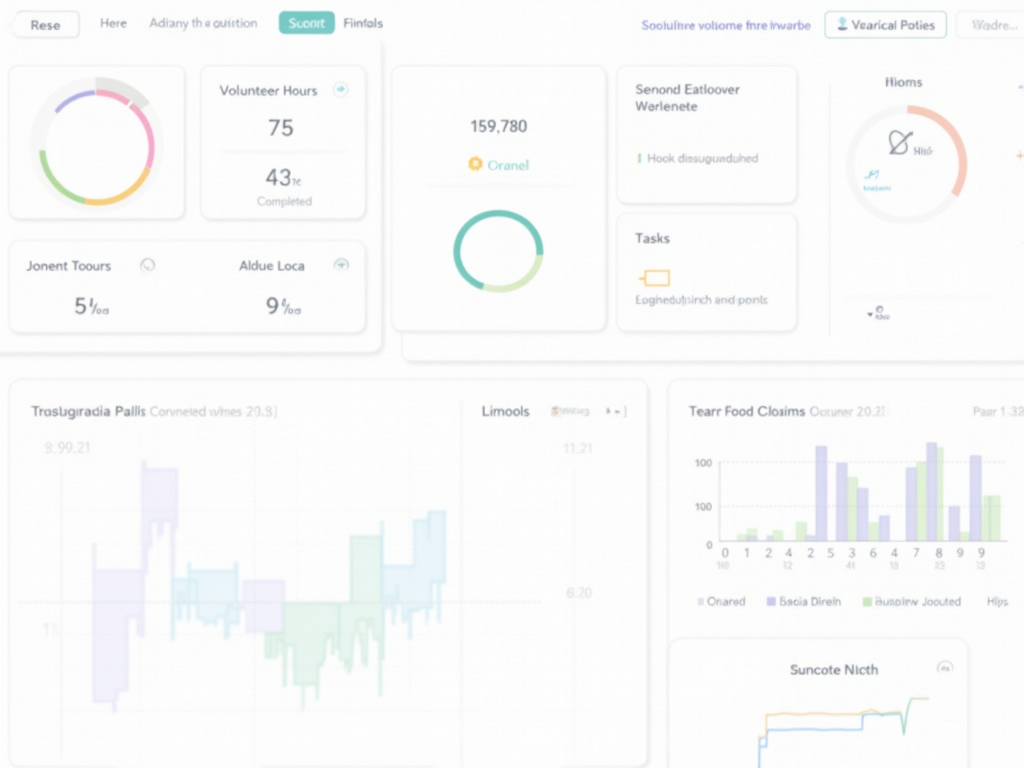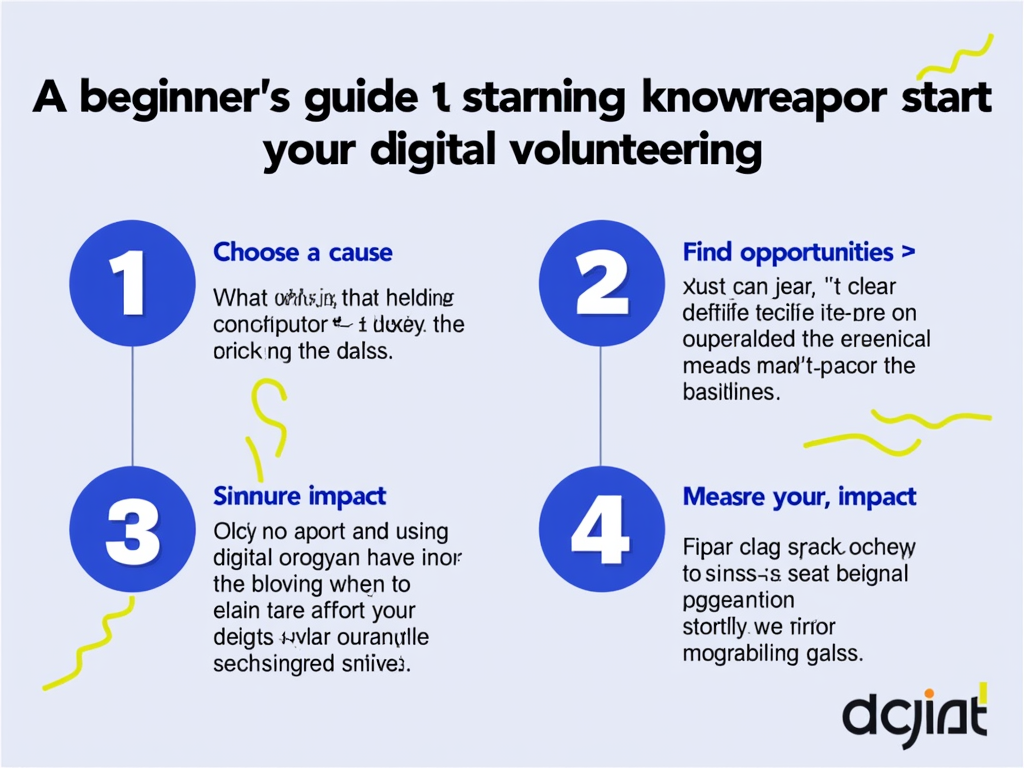Measuring Success in Digital Volunteering: A Comprehensive Guide
By , April 30, 2025
Imagine you're a volunteer who has just spent hours creating social media content for a cause you believe in. How do you know if your efforts made a difference? In the world of digital volunteering, measuring success is crucial for both organizations and volunteers to understand the impact of their work. This article explores various methods to evaluate the effectiveness of digital volunteering, providing valuable insights and practical tips.
Understanding Digital Volunteering
Digital volunteering, also known as online volunteering, allows individuals to contribute to nonprofit organizations and social causes from anywhere in the world using the internet. It encompasses a wide range of activities, such as:
- Online advocacy: Spreading awareness through social media, blogs, or petitions.
- Content creation: Writing articles, designing graphics, or producing videos.
- Data entry and analysis: Assisting with data management and interpretation.
- Virtual mentoring: Offering guidance and support online.
- Software development: Contributing to open-source projects or creating tools for nonprofits.
The flexibility and global reach of digital volunteering make it an attractive option for both volunteers and organizations.

Defining Success in Digital Volunteering
Success in digital volunteering can be multifaceted. For organizations, it might mean achieving project goals, increasing volunteer engagement, or enhancing online presence. For volunteers, success often translates to personal fulfillment, skill development, or making meaningful connections.
To effectively measure success, it's essential to set clear, SMART (Specific, Measurable, Achievable, Relevant, Time-bound) goals at the beginning of a project. For example, an organization might aim to increase its social media following by 20% through a digital advocacy campaign within three months.
Measuring Impact
Measuring the impact of digital volunteering involves assessing both quantitative and qualitative outcomes. Quantitative metrics might include:
- Number of tasks completed
- Hours volunteered
- Social media engagement (likes, shares, comments)
- Funds raised
Qualitative metrics could encompass:
- Feedback from beneficiaries
- Volunteer testimonials
- Case studies of successful projects
Organizations can utilize tools like Google Analytics, survey platforms, and project management software to track these metrics. According to a report by the United Nations Volunteers, digital volunteering has contributed significantly to achieving sustainable development goals, highlighting its measurable impact.

Volunteer Engagement and Satisfaction
Engaged and satisfied volunteers are the backbone of successful digital volunteering programs. To measure engagement, organizations can track:
- Participation rates: How many volunteers sign up and complete tasks.
- Retention rates: The percentage of volunteers who return for future projects.
- Feedback: Surveys or interviews to gauge volunteer satisfaction.
Recognizing volunteers' contributions through acknowledgments, certificates, or opportunities for growth can enhance engagement. A study by VolunteerMatch found that volunteers who feel appreciated are more likely to continue contributing.
Case Studies: Success in Action
Let's examine some real-world examples:
-
UNV Online Volunteering Service: This platform connects volunteers with organizations globally. Success is measured by the number of completed assignments and positive feedback from both parties.
-
Zooniverse: A citizen science platform where volunteers assist with research. Success metrics include data processed and scientific publications resulting from volunteer contributions.
-
Amnesty Decoders: Volunteers analyze data to uncover human rights abuses. Success is evaluated by the accuracy and timeliness of the analyses.
These cases demonstrate how diverse metrics can be used to measure success in different contexts.

Challenges in Measuring Success
Despite the benefits, measuring success in digital volunteering presents challenges:
- Quantifying qualitative impact: Outcomes like increased awareness or community empowerment are difficult to measure numerically.
- Attribution: Linking specific outcomes directly to volunteering efforts can be complex.
- Data collection: Gathering comprehensive data requires resources and planning.
To address these challenges, organizations can combine multiple measurement methods, establish baselines, and involve volunteers in the evaluation process.
Best Practices for Measuring Success
Here are some best practices to effectively measure success in digital volunteering:
- Set clear goals: Define what success looks like for each project.
- Choose appropriate metrics: Select metrics that align with your goals.
- Use technology: Leverage tools for data collection and analysis.
- Regularly review progress: Monitor and adjust strategies as needed.
- Communicate results: Share impact reports with volunteers and stakeholders.
- Learn from others: Study how similar organizations measure success.
By implementing these practices, organizations can enhance their ability to measure and improve their digital volunteering initiatives.
Getting Started with Digital Volunteering
For beginners interested in digital activism or volunteering, understanding how success is measured can set realistic expectations. Start by choosing a cause you're passionate about, researching organizations that align with your interests, and exploring online advocacy volunteering options. Platforms like VolunteerMatch or Idealist can help you find opportunities. Remember, success isn't just about numbers; it's also about the personal growth and connections you make along the way.

Summary
Measuring success in digital volunteering is essential for understanding and enhancing the impact of these efforts. By setting clear goals, using a mix of quantitative and qualitative metrics, and prioritizing volunteer engagement, organizations can effectively evaluate their programs. For volunteers, success often lies in the fulfillment and skills gained through their contributions. As digital volunteering continues to grow, so too will the methods for measuring its success.